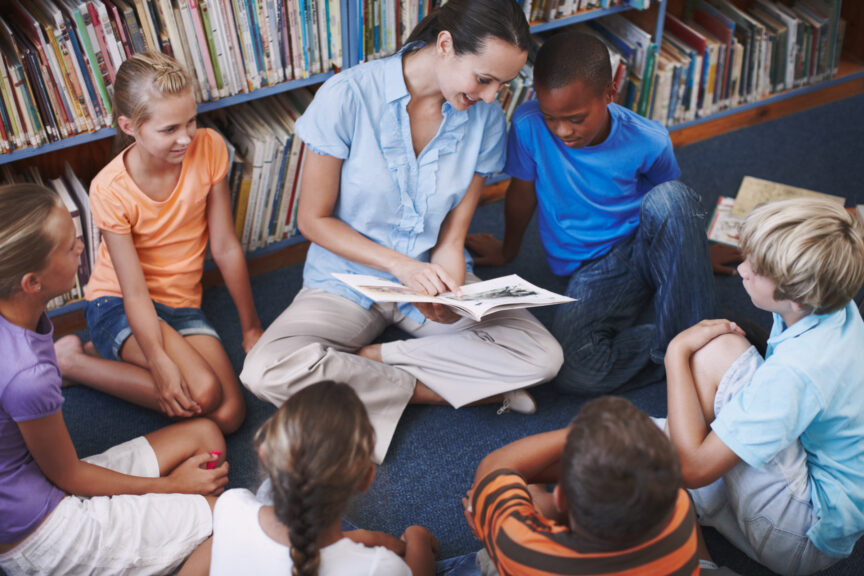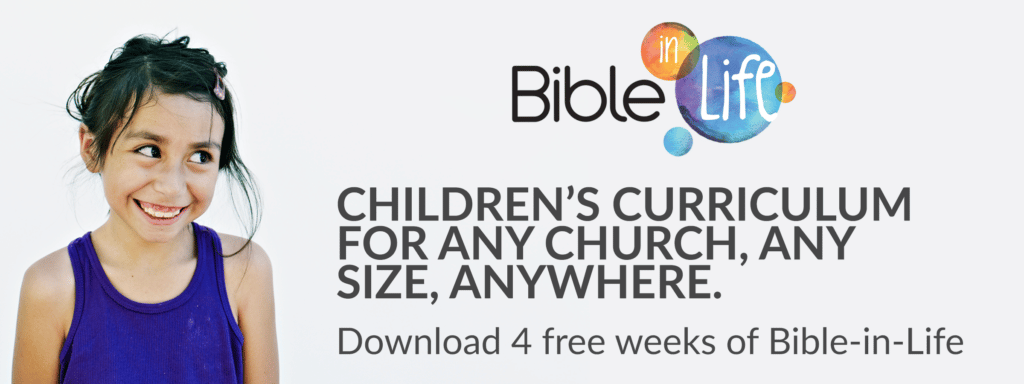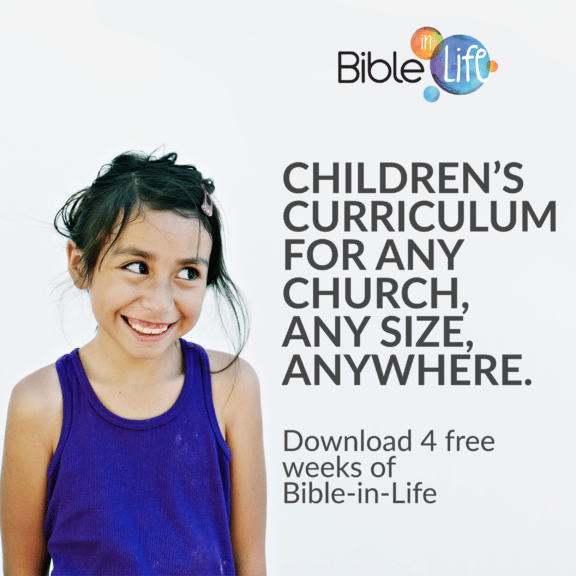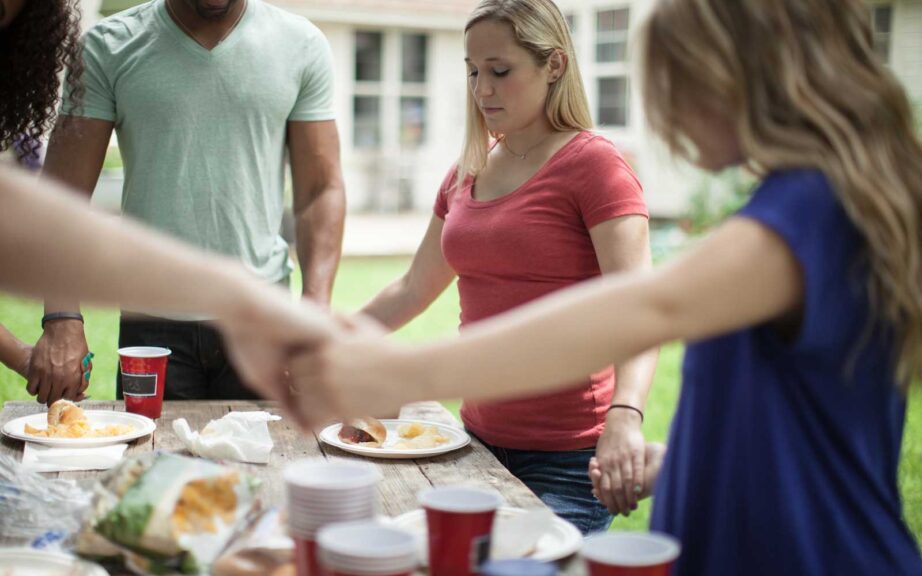Jesus’ Promise to Rise from the Dead
THE BASICS FOR LEADERS
Supplies
Jesus’ promise: that after three days in a grave, he’d rise to life again. If that’s not true, Jesus is just another teacher (if not a liar!) whose words end up on a poster or in a book. But if it is true? Then it changes . . . well, everything.
It changes how you live. Why you live. What you can expect after you quit living (at least here on earth) . . .
So what do you believe? Really believe? Did Jesus keep this awesome promise? You see, Jesus not only promised that he would rise from the dead; he promised that if you love and follow him, you’ll do the same thing. And if there was power for him to do it, there’s power for you too.
As you experience this session, you’re helping your kids explore the single most important truth in their Christian faith.
OPENING ACTIVITY
Option 1: Howzitgoin’
Supplies
- Pencils
- Prepared poster
Before kids arrive, draw a line on a poster. Place a 1 on the left end of the line, a 10 on the right, and a 5 in the middle. As kids arrive, ask them to pencil in their initials on the line.
Say: If this past week was so awful you wish you’d slept through it, place your initials by the 1. If it was a great week you wish you could repeat, put your initials by the 10. Place your initials anywhere on the line that shows how you feel about this past week—except exactly on the 5. That’s because there’s no such thing as a week that’s exactly half good and half bad!
After kids have signed in, give them 30 seconds each to explain why they placed their initials where they did. Be sure to include your own initials and explain your placement on the line. Kids will begin to express themselves more over time—and hearing their stories will help you adapt this lesson to make it relevant to your kids’ lives.
Option 2: Shadow Sketches
Supplies
- Paper
- Markers
Let children pair up. Give each child a sheet of paper and marker.
Say: Did you ever see an artist create a silhouette? They stand people sideways and then sketch just the outline of their heads. They sometimes frame the silhouettes in a cardboard frame, kind of like a cheap painting. We’re all about being cheap, so it’s silhouette time!
Explain that each child will draw a silhouette of his or her partner. The child in each pair whose birthday is larger (the 25th is larger than the 3rd) will pose first. Kids should keep everyone, including their partners, from seeing their work. When finished, kids will fold their sheets of paper and give them to you. Stress that this is to be a serious effort—no silly or mean pictures!
Allow up to two minutes for each silhouette. Then collect the sheets of paper and shuffle them. Then open them and display each. See whether the group can identify the subject of each sketch. Then say: Sometimes we have features that remind people of our parents or grandparents. For me it’s . . .
Briefly point out a feature of yours that is a family trait. Your hair color or height, for instance.
Say: Your turn now. Maybe you know a feature because people point it out. Maybe you don’t know your birth parents, and you’ll have to guess. Either way works.
- What do you think is a feature that shows up in others in your family?
- If you could choose one feature or trait from a parent or even a great-great-great grandparent and have it show up, what would it be? For instance, maybe your grandmother is a good artist or your uncle is very rich. Why would you choose that feature or trait?
- Some people say “like father, like son.” What do you think about that? Are people in families pretty much the same, or are they different?
- How are you like or different from your parents?
Say: Thanks for talking about your families. I know you better now—and I like that! Today we’re going to talk about another father and son and how they’re alike. But first, let’s play a game I call Don’t Fall into the Lava!

AWESOME PROMISE GAME
Don’t Fall into the Lava
Supplies
- Blanket (or large towel)
- Watch with a second hand
- Paper clips (and other options)
Select a blanket on which your kids can stand but will be crowded. If you have just a few kids, use a large towel. Before kids arrive, secretly do something to the blanket so one side is different from the other. For example, attach a couple of paper clips on the edge, sew on a colored thread, and add a small piece of tape. Add details that are small, but noticeable if you look.
Ask children to remove their shoes. Spread the blanket on the floor (“different” side down) and have kids stand on it. Explain that the kids are on an island. The floor around them is red-hot lava. Their challenge is to turn over the blanket and stand on the other side without anyone stepping off the blanket and into the lava in the process.
Time how long it takes. Allow them to try again to see if they can do it more quickly. Have them do it again while seated. Then gather everyone in a circle, sitting on or around the blanket. Discuss:
- What made this activity easy or hard?
- Which side of the blanket was safer for not falling into the lava?
- Without looking down at the blanket, describe the differences between the two sides.
After kids describe the differences they recall, have them investigate. Point out the paper clips, thread, tape, and any other details you planted and they missed.
Say: Even though there are some differences, you can tell that both sides of the blanket are the same blanket. Two sides, one blanket. It’s important to know that Jesus and God are one, sort of like two sides of the same blanket. Jesus told people that when they looked at him, they were looking at God (John 10:30; 14:7). That’s because when Jesus was on earth, he was God with skin on. But the people were like us with the blanket—they didn’t see all the details. We should remember that when we trust Jesus, we’re trusting God. And Jesus didn’t just say he was God; he proved it. Let’s find out more.


PROMISE KEPT BIBLE STORY
Flour Power
Supplies
- Flour (or white play sand, if kids have gluten allergies)
- 1/4 cup scoop
- Colored paper plates (1 per child)
- Large work table
- Newspapers or drop cloth (optional)
- Bible
(Note: If you’re concerned about the mess, spread newspapers or a drop cloth on the floor.) Give each child a plate at a large work table. Place 1/4 cup of flour on each plate. Demonstrate how kids can use a finger to trace a picture on the plate. As the flour moves, the color of the plate will be visible.
Ask children to listen to the Bible reading and to “sketch” on their plates the scene of Jesus’ crucifixion or the tomb where he was buried. Read aloud the sad parts of today’s Scripture: Luke 9:22 and Matthew 28:1.
After kids have sketched, have them carefully move around to examine each others’ art. Then, as a group, discuss:
- How do you think Jesus’ friends and family felt when he was nailed to a cross?
- If you’d been one of Jesus’ followers, how would you have felt to know he’d been buried in a tomb?
- How do you feel now when you think about all the pain Jesus must have felt?
Ask children to gently shake their own plates to erase their artwork.
Say: The good news is that, because Jesus is God, he rose from the dead! We don’t have to feel sad about what happened, because something wonderful came from it.
Read aloud Matthew 28:2-7 and ask kids to sketch how they feel knowing that Jesus is alive. When they finish, let them look at each others’ art again.
Say: Jesus promised to rise from the dead, and he did it. I’m glad! Let’s thank Jesus for who he is and for all he’s done.
CLOSING PRAYER
Blanket Prayer
Supplies
- Blanket
Ask kids to join you in holding the blanket by its edges. Be sure each child is holding part of the blanket, and that the blanket is held at waist height. Say: Let’s use this blanket to thank Jesus for what he’s done for us.
Encourage kids to offer sentence prayers, thanking Jesus for living for us. You begin.
Then have kids lower the blanket to just six inches from the floor. Say: While it’s here close to the ground, please join me in thanking Jesus for dying for us.
Encourage kids to offer sentence prayers. You begin.
When they’ve finished, ask them to raise the blanket to shoulder height. Encourage kids to offer sentence prayers, thanking Jesus for rising from the dead. You start.
When they’ve finished, raise the blanket high overhead. Encourage kids to thank Jesus for his awesome promise to come back someday. You begin. When they’ve finished, lower the blanket as you pray, In Jesus’ name, amen.

EXTRA TIME ACTIVITY
Option 1: Drum Beat
Ask kids to circle up and sit on the floor. Using your hands on the floor, establish the beat of “We will, we will rock you,” a refrain often heard in sports arenas and on classic rock stations.
You’ll be chanting “Jesus, Jesus is God.” Ask kids to call out words that describe Jesus at the appropriate time in the rhythm. For instance, after chanting “Jesus, Jesus is God,” someone might shout out “Strong!” or “Faithful!”
Practice the beat until it becomes almost automatic for your kids, and then see how long you can keep it going with descriptions of Jesus. Then discuss:
- If Jesus is all those things—if he’s God—why do you think he cares about people like us?
- What difference does knowing Jesus make in how you act?
Option 2: Obits
Supplies
- Newspaper obituaries
Briefly explain what an obituary is, and then read several from the newspaper. As a group, pray for the families of those who have died.
Say: When you love and follow Jesus, you have the promise that dying is just a bad day. The next thing you know, you’re with him—forever—in Heaven. Because Jesus is God and rose from the dead, through his power we’ll rise too. We don’t need to be afraid of dying. Let’s be thankful for the hope we have in Jesus!
Option 3: Inquiring Minds Want to Know
Gather kids in a circle. Ask: Jesus promised that we’d rise from the dead too. Does the idea of rising from the dead make you happy, scared, or something else? Why?
Click here for more lessons like this one!










